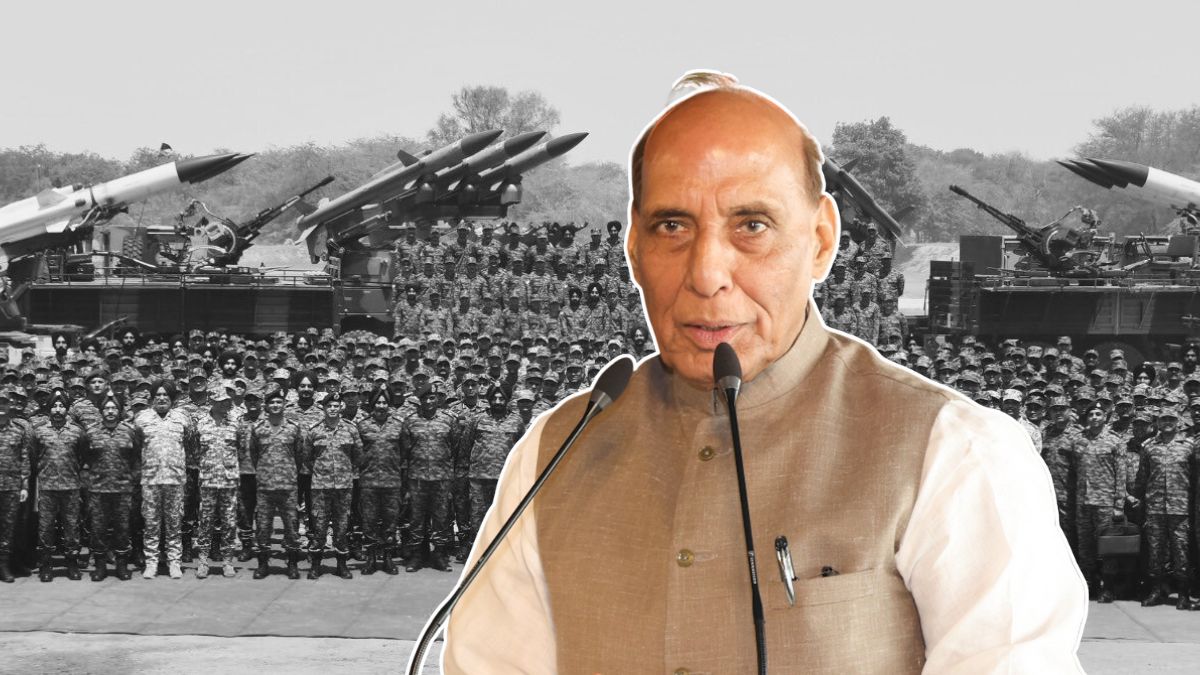For the first time in over a decade, the Ministry of Defence (MoD) has overhauled its procurement framework under the revenue head. Defence Minister Rajnath Singh has approved the Defence Procurement Manual (DPM) 2025, a long-awaited revision of the 2009 guidelines.
Valued at nearly Rs 1 lakh crore annually, revenue procurement covers the operational and sustenance needs of the armed forces, a critical backbone that keeps military platforms battle-ready. The new manual aligns defence acquisitions with evolving global best practices, while ensuring transparency, accountability, and faster decision-making.
DPM 2025 comes at a time when India is navigating the challenges of modern warfare, especially against the backdrop of the recent conflict with Pakistan, following the horrific April 22 Pahalgam terror attack.
DPM 2025: How does it strengthen military preparedness?
The revised manual empowers Competent Financial Authorities (CFAs) at the field level to take faster decisions, including extensions of delivery timelines, without files moving up the chain of command. This decentralization is expected to cut bureaucratic delays and ensure timely delivery of spares, equipment, and services.
For frontline units, this means fewer operational bottlenecks, quicker repairs and refits, and improved equipment availability during critical missions. A special upfront provision of 15% growth of work has been factored in for complex maintenance of aerial and naval platforms to reduce downtime.
What’s new for Indian industry and start-ups in DPM 2025?
DPM 2025 makes a decisive shift towards Atmanirbharta (self-reliance) by incentivizing domestic participation across the supply chain. A new chapter on innovation and indigenization promotes collaboration between defence PSUs, private firms, MSMEs, start-ups, and academia.
The manual encourages IITs, IISc, and other institutions to play a role in designing and developing critical spares and technologies. Some of the provisions to support industry include:
- Relaxation of development contract norms with minimal Liquidated Damages (0.1%) during prototype phase.
- Capping of maximum LD at 5% (10% only in extreme delays).
- Guaranteed order quantities for up to five years, extendable in special cases.
- Handholding by the Services in terms of technical knowledge and access to existing equipment.
This combination of financial assurance, contractual flexibility, and institutional support is designed to lower entry barriers for new players while boosting the confidence of established firms.
How does it address procurement complexities?
The new manual acknowledges the realities of India’s defence ecosystem. For specialized goods available from limited sources, limited tendering is allowed up to Rs 50 lakh (higher in exceptional cases). Proprietary Article Certificates (PAC) can still be used for proprietary items, though the MoD has mandated parallel market exploration to identify alternatives.
Procurements under Government-to-Government (G2G) agreements have also been streamlined, ensuring smoother procedures for high-value acquisitions. Importantly, the requirement of obtaining a No Objection Certificate (NOC) from DPSUs before open bidding has been scrapped, so as to level the playing field between public and private firms.
What does this mean for India’s defence modernization drive?
By institutionalizing collegiate decision-making in line with capital acquisition processes, and integrating the Ministry of Finance’s updated procurement guidelines, DPM 2025 reflects the government’s push for reforms in defence procurement. It blends transparency with pragmatism, supporting both operational readiness and industrial growth.
At a strategic level, the manual is more than just a procedural document. It signals the government’s intent to equip the armed forces with the right tools, at the right time, and at the right cost, while nurturing India’s defence industrial base to compete globally.
